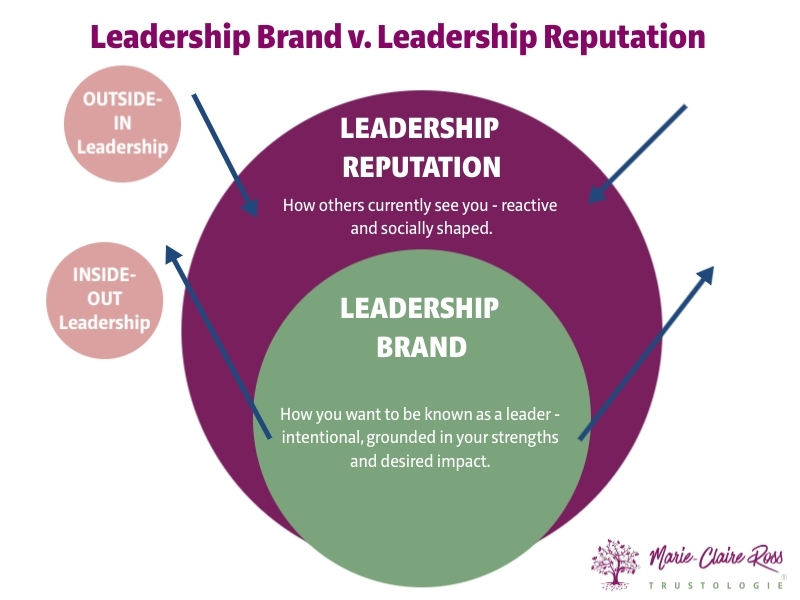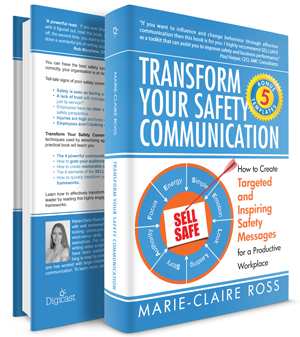6 Essential Executive Skills That Will Make You Unstoppable in 2026
The workplace is evolving at a pace few previous generations have seen and 2026 will mark a turning point. The Future of Work is blended, not hybrid....
Develop leaders, strengthen executive teams and gain deep insights with assessments designed to accelerate trust and performance.

Transform how your leaders think and perform with keynotes that spark connection, trust and high-performance cultures.

Explore practical tools, thought-leadership and resources to help you build trusted, high-performing teams.

Trustologie® is a leadership development consultancy founded by Marie-Claire Ross, specialising in helping executives and managers build high-trust, high-performing teams.

3 min read
Marie-Claire Ross : Updated on February 9, 2021

 We all have different styles when it comes to making decisions. When it comes to making a choice at work, how do you like to operate?
We all have different styles when it comes to making decisions. When it comes to making a choice at work, how do you like to operate?
Do you:
A. Prefer to receive lots of detailed information, so that you can make a comprehensive assessment, or
B. Make a quick decision using minimal information?
In our society, we've been made to believe that the best decisions are made from deliberate and systematic thinking. There is a subtle bias against making quick decisions, as we often feel that snap judgements are often wrong because it takes a risky short cut.
Yet, when research has been undertaken with nurses or firefighters who need to make snap decisions they found that the better quality the decision the less likely all of the options had been assessed.
So when it comes to making complicated decisions, B is the correct answer.
In fact, research undertaken with psychologists and even emergency room doctors found that the more information that was given about a patient, the less accurate the decision. Yet, interestingly, the confidence levels of both psychologists and doctors of their analysis was much higher, the more information they had received. Even though, the decision they made was often flawed.
The reality is that being provided lots of information to make a decision, actually increases the likelihood we will make the wrong decision.
We don’t need to sift through every fact or figure. Former Secretary of State in the US, Colin Powell said:
“I can make a decision with 30% of the information, anything more than 80% is too much.”
Ironically, the desire for improved confidence undermines the accuracy of the decision. It makes us more muddled.
In fact, brain research shows that we intuitively figure out what to do with information we have received before we can express it verbally. Our ability to unconsciously make a decision is very fast and highly accurate.
This is because our brain has developed a very fast-thinking section that keeps us alive by relegating all of the high level thinking to the unconscious. And it's this section that makes high quality and quick decisions.
Rather counter intuitively, the more we think about our decision the more likely we are to make a poor choice. That’s why when you force people to make a rational decision with the rational part of their brain, they over think. Their decisions take longer and tend to be of lower quality.
Research has found that the more complicated a problem, the more we need to trust our instincts rather than undergo complicated analysis. The more variables we need to look at, the more we need to trust our gut. Our unconscious brain is at its best when it has to make a decision from a variety of variables.
Helping Employees Make the Right Decision
Essentially, this means that as a safety communicator you want to avoid people over-thinking any safety information you provide. Your communication needs to inspire people right there and then. Then, you can follow through with the instruction on how to change their behaviour. You don’t want them having to think about it! They need to feel it. Instantly.
Ask yourself, how often have you provided decision makers or employees with lots of information believing that would influence them to be more aware of safety?
The reality is that not only does it increase their chances of making the wrong decision about what to do, but you're also more likely to make them tune out due to information overload.
If you are finding that when you provide safety information and some employees question why or doubt the need, then you know that your safety communication isn't helping people make the right decision.
For eons, people have said that they made a gut decision. We look up at colleagues with comments like "She's got her finger on the pulse" and "He is a sharp decision maker." Yet, how often do workplaces churn out big complicated safety information expecting people to read it, let alone make a decision as to how to work safely?
Think about how you measure safety in your workplace, are you checking lots of measurements? We often think we need all of the information to keep a workplace safe, but when you think about it, all you need is one main figure. Like the weather. Do we need to know the speed of the wind, humidity or barometric pressure. No. All we need is the temperature forecast.
The key to good decision making is not lots of knowledge. It's understanding. We're drowning in information, yet starving for wisdom. We've confused information with understanding.
What organisations and their staff need is for someone just like you, to clearly tell them what to look out for. Yet, so many safety professionals write and talk about safety in such a way that's confusing and obscures how information relates to people's lives.
The new role of the safety professional is to critically think about what the safety information is highlighting and then write and talk about it in such a way, that people can understand what it means and how it is relevant.
In the book, Transform Your Safety Communication, it refers to 3 steps that you need to follow in your safety communication whether written or verbal, to help people make better decisions:
1. Write simple messages - Cut down the fluff and tell people exactly what the problem is and how they can protect themselves and others.
2. Reduce the content - Less is more. If you provide people with too much information, they will over think and get overwhelmed. Remember, over-thinking leads to poor quality decisions. You want people to feel what they need to do.
3. Tell people what to do - Prioritise the information so that people know how to take action. Without this people will determine what to do themselves. This can often be the wrong choice.
By taking the guesswork out of your safety messages and ensuring that people feel instantly what they need to do to improve, you will dramatically increase the amount of high quality decisions that your workforce makes on safety.
Photo Credit, Stuart Miles

The workplace is evolving at a pace few previous generations have seen and 2026 will mark a turning point. The Future of Work is blended, not hybrid....

Many leaders jump into a leadership position excited by the opportunity to help others and perform at a higher level.

What makes a good team leader isn’t just about having authority or getting tasks done - it’s about the ability to create an environment where people...

When it comes to getting staff to remember your important safety messages, using a safety slogan can be an effective way of getting the message...
As mentioned in " How to Develop a Workplace Safety Messages Campaign" Part 1, marketing is the key to getting your safety messages heard and...

Marie-Claire Ross, author of the highly acclaimed book, Transform Your Safety Communication, is helping safety leaders and safety professionals...